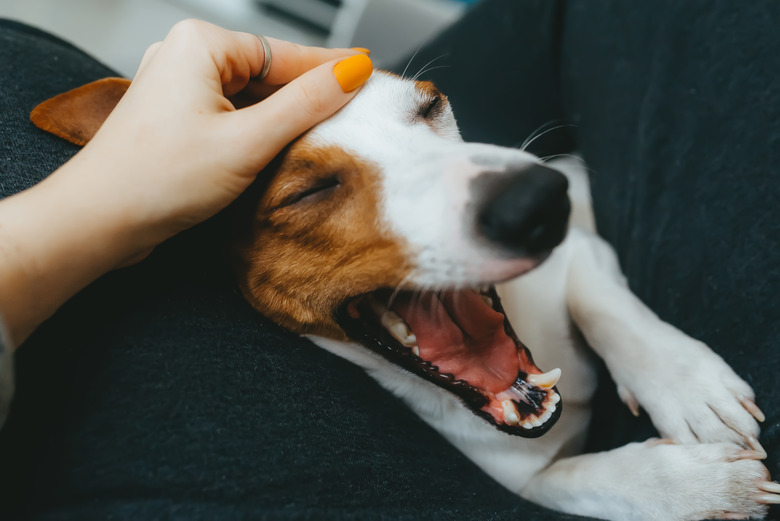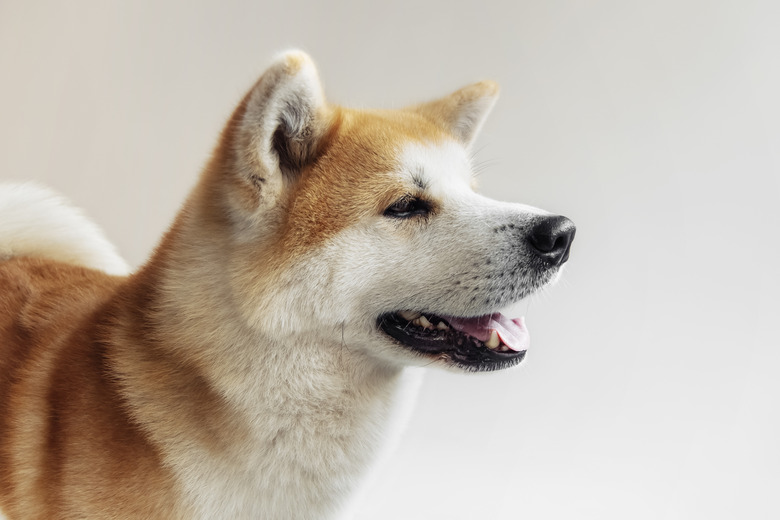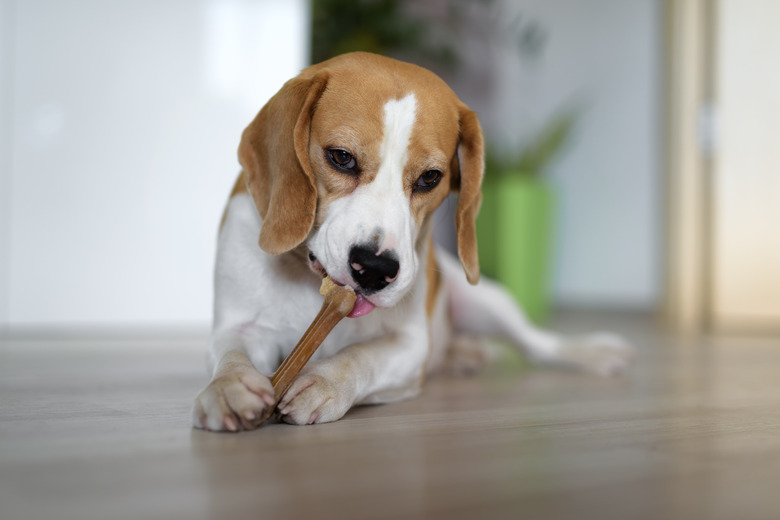What Causes Black Gums In Dogs?
What Causes Black Gums in Dogs?
For most dogs, bubble-gum-pink gums are a sign of good health. Swollen, red gums and unusually bad breath are automatic tip-offs to something being amiss. Black gums in a dog can be a bit more confusing, indicating anything from gum disease and gingivitis to cancer. For some breeds, black gums are perfectly normal and not cause for worry.
Black gums are normal in some dog breeds
Black gums are normal in some dog breeds
Even if your pet is a mutt, genetics may be responsible for dark gums in dogs who are healthy and don't have other signs of gum disease. Chow chows, for example, are actually considered to be more desirable as a breed when the dog's gums are black. Black mouth cur and Shar-Pei breeds also should have a darkly pigmented mouth, according to official standards.
Dark pigmentation isn't necessarily spread evenly throughout the mouth. It's not unusual for dogs of almost any breed to have distinct black spots on their tongue and gums. The texture is more important than color. If the spot is raised or otherwise appears different than the surrounding gum tissue, it could be a sign of trouble.
Furcation can lead to dog tooth loss
Furcation can lead to dog tooth loss
A black spot right along the gum line could be the furcation — the space between the tooth roots — being exposed in canine gum disease. A dog's tooth furcation is closer to the surface of the gums than a human's. It is easy for pet owners to mistake exposed furcation for the dog having a cavity in the tooth. The condition can lead to tooth loss, however, so it should be checked out by a veterinarian.
Raised spots can indicate cancer in dogs
Raised spots can indicate cancer in dogs
Raised black spots along the gum line can be a sign of oral cancer, one of the most common forms of cancer in dogs. It is typically melanoma. Early removal is critical, as the disease is aggressive. It can spread beyond the gum tissue into the surrounding bone and to other parts of the body like the lungs.
It's not easy to tell if a dog's raised black spots along the gum line are fast- or slow-growing, and waiting to see how fast the spots grow is not a good idea. As soon as you notice a black raised area, get your dog to the veterinarian. One or more biopsies of the spot will let the veterinarian know your dog's condition. "Dental X-rays will show if the underlying bone is affected," says Dr. Shagufta Mulla, a veterinarian with a DVM degree from Colorado State University with 20 years of experience as a small animal veterinarian.
Develop an oral hygiene routine for dogs early
Develop an oral hygiene routine for dogs early
The best way to know if your dog's black gums are healthy is to develop a regular dental hygiene routine with your pet from the time they first come to live with you. Using a toothbrush and toothpaste made for dogs helps keep your dog in good dental health and enables you to become familiar with the normal coloration of their gums and determine when any sensitivity or abnormal coloration is developing that requires seeing a veterinarian. Developing a dental routine allows you to assess your dog's oral health and helps them become comfortable with you having your fingers in their mouth.
If you catch a glimpse of a black coloration in your dog's mouth while playing or feeding them a treat, help them calm down and do a gum examination. Put your hand over the muzzle and gently lift the lips with your fingers to reveal the gumline. "If your dog will let you, try to also get a look at the roof of the mouth, since oral tumors can also occur there," Dr. Mulla suggests.
Note whether any dark spots on your dog's dental tissue are raised, swollen, or lumpy in appearance. While you're looking, note any brown or yellow crust along the gumline and whether the gums look inflamed. Bad dog breath can be an indication of an abscess or other gum disease.
Bleeding gums and other signs of problems in dogs
Bleeding gums and other signs of problems in dogs
Here are some other indications that your dog needs a trip to the veterinarian:
- Bleeding gums
- Unusual or excessive drooling
- Uncharacteristic red gums, pale gums, or discoloration
- Avoiding crunchy or hard food, which is usually a sign of mouth pain
- Unusual chewing or eating habits
- Missing tooth or teeth
- Subdued behavior
- Raised areas on the gums or mucous membranes that are new, even if they're not pigmented
Establishing regular dental visits early on with dental cleanings to remove tartar and buildup from the teeth and gums can help prevent dental disease, like gingivitis and periodontal disease. A clean mouth also contributes to your dog's overall health, as it helps prevent other health problems that can occur if bacteria spreads throughout the body.
Contact your dog's veterinarian for a diagnosis
Contact your dog's veterinarian for a diagnosis
If black spots are not normal for your dog's breed or you've noticed spots before and they seem different now, it's best to take your dog to the veterinarian to determine the underlying cause. Additionally, dogs who don't have an established home dental care routine might be uncooperative, especially if they are in pain. Hurting or aggressive dogs may snap or bite. Call your veterinarian and schedule an appointment to have your dog professionally examined instead of risking harm to yourself.
The bottom line
The bottom line
Black spots or black gums are normal for some dog breeds and even makes them more desirable. However, if your dog is not one of those breeds, black spots that appear suddenly, especially if they are raised or appear to change or grow, could be cause for concern. Your veterinarian has the tools and expertise to determine the underlying cause of your dog's black gums or spots and to develop a plan for treatment if needed.


